The 412th Test Wing has tested a new weapons pylon designed by Boeing that could significantly enhance the B-1B’s weapon carriage capabilities, according to a press release.
The Load Adaptable Modular Pylon (LAM) was recently flown attached to a B-1B test aircraft with the 419th Flight Test Squadron at Edwards Air Force Base.
The LAM pylon is designed to carry a variety of standard and emerging weapons, allowing for greater flexibility and agility. While the B-1B was used for this test, the LAM can be modified for other aircraft if necessary.
This testing is part of ongoing efforts at Edwards to work with private industry and improve test infrastructure. These initiatives aim to provide valuable experience in engineering and analysis for future programs amidst increasing global power competition.
The B-1B Lancer, commonly known as the “Bone” (from “B-One”), is a supersonic variable-sweep wing, heavy bomber used by the United States Air Force. It is one of the Air Force’s three strategic bombers, alongside the B-2 Spirit and the B-52 Stratofortress. The B-1B boasts a payload capacity of 75,000 pounds (34,000 kg), making it the heaviest payload of any U.S. bomber.
Originally designed with nuclear capabilities, the B-1B’s role was changed in 1992 when it was reassigned to the Air Combat Command and reconfigured for conventional bombing. The aircraft first saw combat in Operation Desert Fox in 1998 and was subsequently used during NATO operations in Kosovo. It has also supported U.S. and NATO military forces in Afghanistan and Iraq.
As of 2021, the U.S. Air Force maintains a fleet of 45 B-1Bs. However, the Northrop Grumman B-21 Raider is set to begin replacing the B-1B after 2025, with all B-1s planned to be retired by 2036.
At the UK Defence Journal, we aim to deliver accurate and timely news on defence matters. We rely on the support of readers like you to maintain our independence and high-quality journalism. Please consider making a one-off donation to help us continue our work. Click here to donate. Thank you for your support!



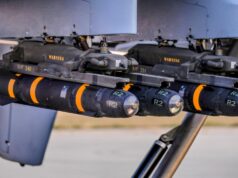
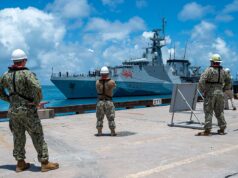

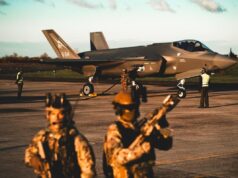
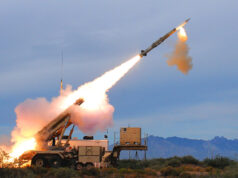
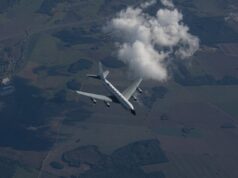
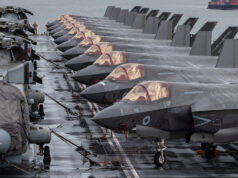
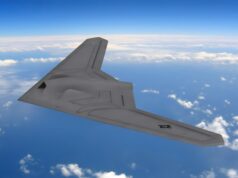
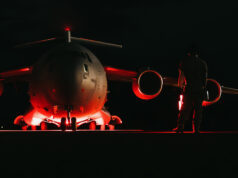
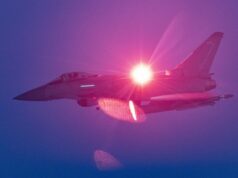

I await the experts on this forum to enlighten me as to why an aircraft that can carry up to 75,000 lbs in its internal bomb bay (I presume?) needs a ‘bomb rack’ stuck on to it.
More bombs = better
Often times the most obvious answer is the correct one.
The USAF has been working on PGM kits for conventional bombs that can hit moving targets. I imagine they have an eye on the Taiwanese Straits. A squadron of heavy bombers with even more capacity stuffed to the gills with PGM that can hit ships might be useful at some point in the near future. The US only has to demonstrate the capacity to deny the Straits, they don’t have to prove that they can actually control them.
Echoing your point, they are working on the a loadout for the B1 and the B52 of up to 40 lrasm type weapons per aircraft.
It’s a bit more involved than just the B-1.
U.S. Air Force Demonstrates New Modular Weapons Pylon On The B-1B Bomber – The Aviationist
Possibly also bigger = better? I believe the B1 has three bomb bays so would imagine that may restrict larger payloads eg the hypersonic missile they have attached to a B52.
I’d imagine this is not increasing the aircraft’s max payload. But is giving the aircraft a more adaptable and flexible weapons pylon. Whereby different sized weapons won’t need to have a tailored pylon.
It will not only aid logistics, as only one pylon type is required. But also speeds up turnaround times, as you don’t need to remove and replace a pylon to change weapons load out.
I believe you’re right. The usaf probably sees itself developing a number of new larger air launched weapons and needs to standardized on a pylon and interface that will support these weapons.
Indeed the banner photo’s pylon placement is where the lightning pod is normally affixed.
Believe tour interpretation is correct. Bone may well have been the platform for convenience. 🤔
… your…🙄
Do wish the RAF had B-1 Lancet. 😞 🇬🇧
Lancer, more affectionately, Bone. 😊
Bring back the Vulcan!
A little bit late for that
Why not use the extra rack for that slight stealth fuel tank for that slight extra range.. 😏 Do you see where I’m going with this? hehe